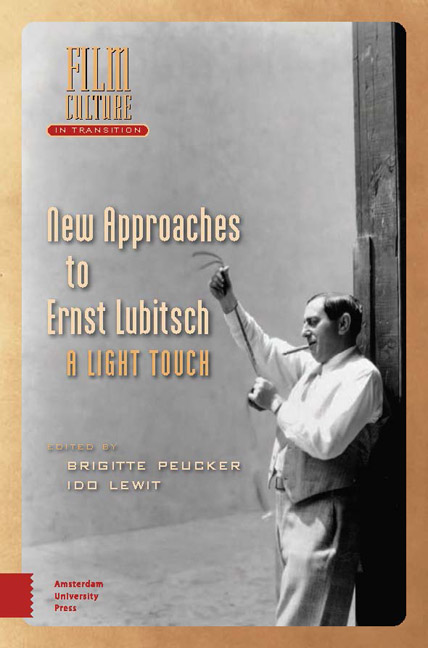5 - “Done!”: Kurt Richter’s Perspectival Set Design in Lubitsch’s German Films
Published online by Cambridge University Press: 16 April 2024
Summary
Abstract
This essay takes a closer look at Lubitsch's prolific collaboration with scenographer and artistic director Kurt Richter (1885–1960). What we call the “Lubitsch touch” was also powerfully shaped by the collaborative materialist practice and hands-on artistry of costume designers, architects, and set designers working behind the scenes in the German film industry. Focusing on the integrated set design of Lubitsch's Ossi comedies, Richter's self-reflexive and perspectival set design, recycled miniatures, and Secessionist and Expressionist sets are examined not as a heavy “metaphysics of decor” (Sabine Hake), but as a lighter, multilayered spectacle that dialogues with spectatorship itself.
Keywords: Kurt Richter, Set Design, Film Art, German silent film, Film Architecture
Siegfried Kracauer, the trained architect turned cultural critic, once quipped that popular industrial exhibitions in the early twentieth-century not only disseminated new technologies and notions of progress, but they also seduced the public with “peep-box pictures (Guckkastenbilder)” promising “new worlds.” Some of the worlds German spectators in the Golden Twenties peeped in on at such exhibitions were elaborate film sets with, quite literally, framed interiors and exteriors. In 1922, the director of the Munich Theater Museum Franz Rapp organized a special exhibition on contemporary German set design for the national craft and industry fair. Two halls branching off from the main exhibit were sponsored by major players in the film industry. Here, spectators could gawk at serpentine scene sketches and stills from canonical Expressionist films. Ernst Lubitsch's exuberant epics, period pieces, and parodies Deception (Anna Boleyn, 1920), One Arabian Night (Sumurun, 1920), The Mountain Cat (Die Bergkatze, 1921), and The Loves of Pharaoh (Das Weib des Pharao, 1922) were also richly represented. In particular, the work of the director's principal art designers Kurt Richter and Ernst Stern was prominently displayed—including Richter's 6. by 8 foot miniature model set of the medieval Spanish city of Toledo for his unfinished project Carnival in Toledo, and production shots of the ancient Egyptian city Richter and Stern erected in the sand hills of Berlin-Steglitz for Lubitsch's lavish spectacle, The Loves of Pharaoh.
- Type
- Chapter
- Information
- New Approaches to Ernst LubitschA Light Touch, pp. 101 - 122Publisher: Amsterdam University PressPrint publication year: 2024



